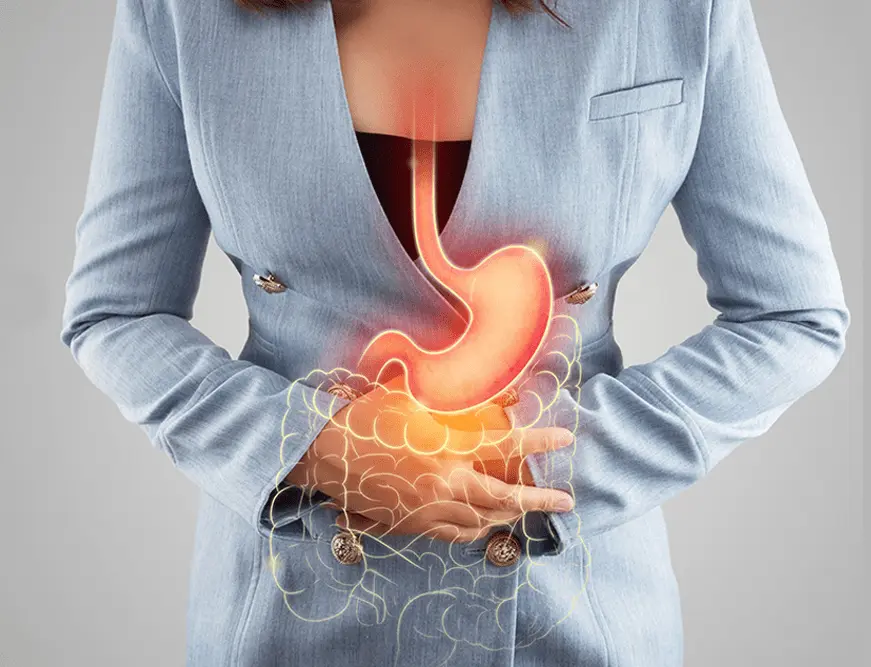
Abdominal Disease in Indore
Stone in Gallbladder
It is stone-like objects that develop in the gallbladder or bile ducts (the pipe-like system within the liver). It can range dramatically in size, from tiny grains of sand to golf ball-sized objects. Interestingly, small stones can often cause the most trouble. These are stones that can leave the gallbladder and get stuck. Larger stones tend to remain quietly in the gallbladder. It is important to know that many people who have gallstones are never bothered by them and may not know the stones are even there. In these cases, no treatment is needed.t loss, you may need to exercise 300 minutes or more a week. You probably will need to gradually increase the amount you exercise as your endurance and fitness improve.
Symptoms
- 1) Sudden and rapidly intensifying pain in the upper right portion of your abdomen
- 2) Sudden and rapidly intensifying pain in the center of your abdomen, just below your breastbone
- 3) Back pain between your shoulder blades
- 4) Pain in your right shoulder
- 5) Nausea or vomiting
When to see a doctor
Make an appointment if you have any signs or symptoms that worry you.
Seek immediate care if you develop signs and symptoms of a serious gallstone complication, such as:
- 1) Abdominal pain so intense that you can't sit still or find a comfortable position
- 2) Yellowing of your skin and the whites of your eyes (jaundice)
- 3) High fever with chills
Appendicitis Surgery (Appendectomy) in Indore
Appendix is the inflammation of the appendix which is a pouch-shaped organ attached to the large intestine. Though not every case of appendicitis is life-threatening, an untreated inflamed appendix can rupture and put the patient in critical condition. Therefore, the longer the state remains unchecked, the greater the threat there is to the life of the patient. Appendicitis causes pain in your lower right abdomen. However, in most people, pain begins around the navel and then moves. As inflammation worsens, appendicitis pain typically increases and eventually becomes severe.
Symptoms
- 1) Abdominal pain. The pain may begin around the belly button.
- 2) The pain gets severe while moving, walking, or coughing.
- 3) Nausea and vomiting
- 4) Constipation, back pain, a slight fever, or a swollen abdomen
- 5) Loss of appetite
- 6) Abdominal bloating
When to see a doctor
Make an appointment if you have any signs or symptoms that worry you.
- 1) Persistent vomiting or nausea
- 2) Incapability to digest food or fluids
- 3) Swelling in leg
- 4) Abnormal body temperature
- 5) Infection at the surgical site
Abdominal pain in Indore
Abdominal pain is discomfort anywhere in your belly — from ribs to pelvis. It’s often called ‘stomach’ pain or a ‘stomach’ ache, although the pain can be coming from any number of internal organs besides your stomach.
Abdominal pain comes in many forms, and may range from cramps that come and go to sudden, stabbing pains to constant, dull abdominal aching. Even mild pain can be an early sign of a serious condition, which is why healthcare providers often monitor these patients for changes in their conditions.
Looking for a skilled female Abdominal Disease, Appendicitis and Abdominal pain in Indore? Get specialized care and advanced treatment from experienced professionals. Our top-rated female surgeon offers personalized, compassionate, and effective solutions for hernia repair and recovery. Ensure your health and well-being with expert surgical care. Contact us today!
Symptoms
- 1) Nausea, fever, or the inability to keep food down for several days.
- 2) Bloody stools.
- 3) Difficulty breathing.
- 4) The abdomen is tender to the touch.
- 5) Pain lasts for several days.
- 6) The pain occurs during pregnancy.
When to see a doctor
Make an appointment with your doctor if your abdominal pain worries you or lasts more than a few days.
- 1) Mild pain that self-limits but recurs frequently
- 2) Pain that wakes you up at night
- 3) Pain and bloating that last more than 2 days
- 4) Burning or pain with urination
- 5) Dull pain that lasts for more than a week
